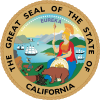| Global Warming Solutions Act of 2006 | |
|---|---|
 | |
| California State Legislature | |
| Full name | Global Warming Solutions Act of 2006 |
| Introduced | April 3, 2006 |
| Assembly voted | August 31, 2006 |
| Senate voted | August 30, 2006 |
| Signed into law | September 27, 2006 |
| Sponsor(s) | Fran Pavley, Fabian Nunez |
| Governor | Arnold Schwarzenegger |
| Code | California Health and Safety Code |
| Section | 38500, 38501, 28510, 38530, etc. |
| Resolution | AB32 (2005-2006 Session) |
| Associated bills | AB 398 (2017-2018 session; extends cap-and-trade until 2030), SB 32 (2015-2016 session; adds GHG reduction target of 40% below 1990 levels by 2030) |
| Website | www |
Status: Amended | |
The Global Warming Solutions Act of 2006, or Assembly Bill (AB) 32, is a California state law that fights global warming by establishing a comprehensive program to reduce greenhouse gas emissions from all sources throughout the state. AB32 was co-authored by Assemblymember Fran Pavley (D-Agoura Hills) and Speaker of the California Assembly Fabian Nunez (D-Los Angeles) and signed into law by Governor Arnold Schwarzenegger on September 27, 2006.
On June 1, 2005, Governor Schwarzenegger signed an executive order known as Executive Order S-3-05,[1][2] which established greenhouse gas emissions targets for the state. The executive order required California to reduce greenhouse gas emissions to 2000 levels by 2010, to 1990 levels by 2020, and 80% below 1990 levels by 2050. However, to implement this measure, the California Air Resources Board (CARB) needed authority from the legislature. The California State Legislature passed the Global Warming Solutions Act to address this issue and gave the CARB authority to implement the program.
AB 32 requires the California Air Resources Board (CARB or ARB) to create regulations and market mechanisms to reduce the state's greenhouse gas emissions to 1990 levels by 2020, a 30% statewide reduction,[3] with mandatory caps beginning in 2012 for significant emissions sources. The bill also allows the Governor to suspend the emissions caps for up to a year in case of emergency or significant economic harm.
California leads the U.S in energy efficiency standards and environmental protection, but it is also the world's 12th carbon largest emitter.[4] Greenhouse gas emissions are defined in the bill to include all the following: carbon dioxide, methane, nitrous oxide, sulfur hexafluoride, hydrofluorocarbons and perfluorocarbons.[5] These are the same greenhouse gases listed in Annex A of the Kyoto Protocol.[6]
- ^ "California Climate Change Executive Orders". California Climate Change. Archived from the original on December 19, 2011. Retrieved April 17, 2016.
- ^ "EXECUTIVE ORDER S-3-05". Office of Governor. Archived from the original on June 2, 2011.
- ^ "Climate Change". California Air Resources Board. September 5, 2018. Retrieved April 24, 2019.
- ^ "Gov. Schwarzenegger Signs Landmark Legislation to Reduce Greenhouse Gas Emissions". Office of the Governor. September 27, 2006. Archived from the original on September 28, 2006.
- ^ "Assembly Bill No. 32. CHAPTER 488. An act to add Division 25.5 (commencing with Section 38500) to theHealth and Safety Code, relating to air pollution" (PDF). California State Assembly. September 27, 2006.
- ^ Kyoto Protocol (PDF) (Report). United Nations Framework Convention on Climate Change. December 10, 1997. p. 22. Retrieved July 29, 2021.